
Guests
- John Bellamy Fosterprofessor of sociology at the University of Oregon and editor of Monthly Review.
What is MAGA imperialism? Monthly Review editor John Bellamy Foster says that, despite its feints toward anti-imperialist isolationism, President Donald Trump’s foreign policy has coalesced into a “hyper-nationalist” form of populism that rejects the U.S.'s post-WWII adherence to liberal internationalism and promotes dominance over other countries via military power rather than through economic globalization. Foster explains that this “Trump doctrine is opposed to multi-ethnic empires and multi-ethnic nations,” operating under a “racial definition of foreign policy, with the notion that the United States is a white country and other ethnicities don't belong.” And while some analyses of the Trump coalition locate its base in the “white working class,” in reality this ideology is rooted in the lower middle class, which owns more property and is less opposed to the wealthy capitalist class. “If you go back to the 1930s, to Italy and Germany, it’s the same constituency that drove the fascist movement, but it’s a result of an alliance between big capital … and the lower middle class.”
Transcript
AMY GOODMAN: This is Democracy Now!, democracynow.org, The War and Peace Report. I’m Amy Goodman, with Juan González.
President Trump announced on social media Monday a new round of threatened tariffs, ranging from 25 to 40% on imports from 14 countries, including Bangladesh, Indonesia, Japan, South Korea, Thailand, set to take effect August 1st, barring new deals. Meanwhile, Trump has threatened to impose an additional 10% tariff on countries that align themselves with the BRICS group of nations, led by Brazil, Russia, India, China and South Africa. Trump cited the group’s, quote, “anti-American policies.” The threat came as Brazilian President Luiz Inácio Lula da Silva kicked off a two-day BRICS summit in Rio de Janeiro.
PRESIDENT LUIZ INÁCIO LULA DA SILVA: [translated] So, we don’t want an emperor. Our countries are sovereign. If Trump issues tariffs, other countries have the right to do the same. There is the reciprocity law. I think it’s not responsible for a president from a country like the United States to threaten the world with tariffs on social media. Honestly, there are other forums for the president of a country the size of the United States to talk to other countries.
AMY GOODMAN: This comes as Vice President JD Vance has been promoting Trump’s new foreign policy approach. Vance addressed the Ohio Republican Party last month.
VICE PRESIDENT JD VANCE: What I call the Trump doctrine is quite simple. Number one, you articulate a clear American interest. And that’s, in this case, that Iran can’t have a nuclear weapon. Number two, you try to aggressively, diplomatically solve that problem. And number three, when you can’t solve it diplomatically, you use overwhelming military power to solve it, and then you get the hell out of there, before it ever becomes a protracted conflict.
AMY GOODMAN: For more, we’re joined by John Bellamy Foster, professor of sociology at University of Oregon, editor of the Monthly Review, where his new article is headlined “The Trump Doctrine and the New MAGA Imperialism.”
Well, why don’t you lay out your thesis for us, professor John Bellamy Foster? And welcome to Democracy Now!
JOHN BELLAMY FOSTER: Well, thank you.
The Trump doctrine was articulated in the first Trump administration. Normally, the presidential doctrines are determined by the press, who see the administrations operating in a certain way, according to a certain principle, and they designate that as a doctrine. The Trump administration has been different. There was a lot of confusion about Trump foreign policy. Was it — was it isolationist? Was it anti-imperialist?
In the first Trump administration, Michael Anton, who is one of the main MAGA ideologues and came from the Claremont Institute, which is one of the primary MAGA institutions, was in the National Security Council, and they basically had him leave the National Security Council in order to formally articulate a Trump doctrine that the media would take seriously and foreign policy experts would take seriously. So, he gave a lecture. He was appointed at Hillsdale College, which is a MAGA institution, and he gave a lecture at Princeton University, where he articulated the Trump doctrine, and then that was published in Foreign Policy, the leading foreign policy journal in the United States. And the Trump doctrine is said — and now Michael Anton is the deputy — well, he’s the director of policy planning for the State Department, so he’s the main idea man, essentially assistant secretary of state. He’s the main idea man in the State Department. And he articulated, on behalf of Trump, a doctrine, a Trump doctrine, with four pillars.
The first one was national populism, which is the way in which the MAGA movement designates itself, sort of a neofascist designation, as it resonates with the National Socialism of the Nazi movement. But national populism is the first pillar.
The second pillar is that all nations should be primarily nationalistic in their orientation.
The third one is the opposition to liberal internationalism and to the liberal hegemony of the United States over the world order that was established after the Second World War and has continued to this day. Instead, what is defined is a hyper-nationalist “America first” imperium, where the United States essentially rules the world on its own.
But the fourth pillar is the most important. And Anton went back to Aristotle, who said there were two — three forms of political organization: the tribe or ethnicity, the city-state or the state, and the empire. And empires are defined as multi-ethnic. And the Trump doctrine is opposed to multi-ethnic empires and multi-ethnic nations, and argues that we should — we should determine our foreign policy by ethnicity and, essentially, the tribe. In fact, it’s a racial definition of foreign policy, with the notion that the United States is a white country, and other ethnicities don’t belong, and we’re going to organize our foreign policy, as well as our domestic policy, on that basis.
So, the Trump doctrine was very important. Remember, Anton is now the number one policymaker within the State Department, so this is not a secondary matter.
JUAN GONZÁLEZ: Professor, I wanted to ask you — in your analysis, which I found to be among the clearest I’ve seen anywhere about this new fascist movement, you contradict the perspective of a lot of people that the Trump neofascism has a working-class base. In fact, you say that there were three sectors of the monopoly capitalist class — the tech sector, the oil and gas sector and private equity sector — that have basically united with the lower middle class, a huge portion of the lower middle class, and privileged workers who form the base of the MAGA movement. Could you talk — could you talk about that a little more?
JOHN BELLAMY FOSTER: Well, sociologically, we often talk about the lower middle class, which is a very clear political, cultural designation in U.S. society. These are small property owners, small land owners, lower-level managers within corporations, rural populations. The evangelical movement is tied to this. And the population within the lower middle class is predominantly white and is above the — in terms of income and property ownership, is well above the working class, which we could say is the bottom 60% of the population. And the lower middle class also votes much more heavily than the working class.
So, this has actually been Trump’s political base. The lower middle class is very nationalistic, a tendency to be nationalistic, what we call revanchist — that is, arguing that we have to return to an earlier age: “Make America great again.” They tend to be very racist and anti-immigrant, misogynist, very patriarchal in their orientations. So, the populations of the lower middle class are very heavily located in the exurbs. So, this is the base, the sociological base and political base of Trump.
And as soon as Trump phenomena came into being, The New York Times, which hadn’t talked about the working class for decades, started to refer to the white working class. But really, it’s about the lower middle class. And the lower middle class is traditionally the — they used to be called the petty bourgeoisie. It’s traditionally the base for all movements in the fascist genus. If you go back to the 1930s, to Italy and Germany, it’s the same constituency that drove the fascist movement. But it’s a result of an alliance between big capital, for the billionaires, monopoly finance capital, at the very top of the society, and the lower middle class. The lower middle class is not anti-capitalist. They’re basically opposed to what they see are what, in the MAGA ideology, is called the ruling class, which is the professional managerial class, which is seen as controlling government. And they’re also opposed to the working class, which they see as multi-ethnic and diverse and poverty-stricken, and a population that they don’t want to fall into. So, the lower middle class is sort of the rear guard of the system, that billionaires have basically mobilized them, beginning with the tea party and then the Trump phenomenon, to turn the entire political system to the hard-right turn, to developing a neofascist movement of this kind, which has, of course, all sorts of contradictions.
AMY GOODMAN: John Bellamy Foster, we want to thank you so much for being with us, professor of sociology at the University of Oregon, editor of the Monthly Review, speaking to us from Washington state. His most recent piece, we’ll link to at democracynow.org, called “The Trump Doctrine and the New MAGA Imperialism.”
Happy birthday to Kristine Mar! This is Democracy Now!, democracynow.org. I’m Amy Goodman, with Juan González.
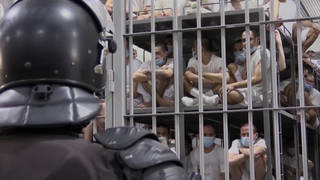


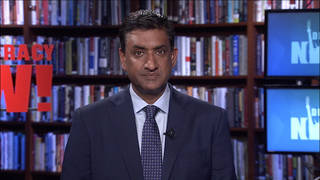

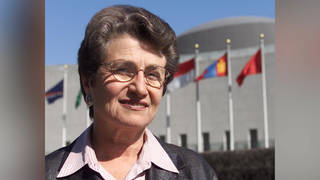

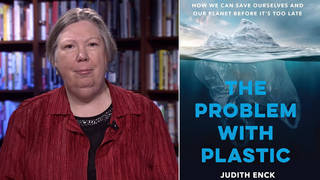
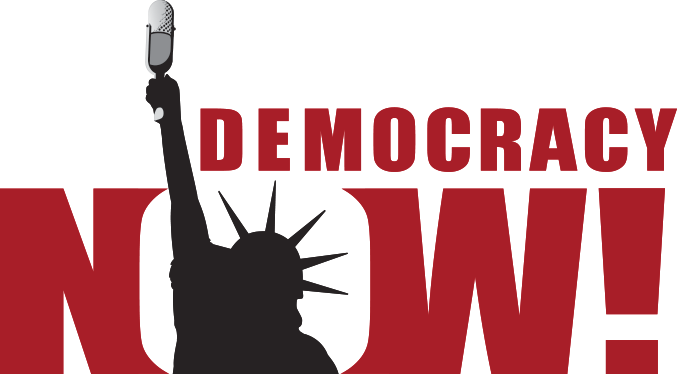

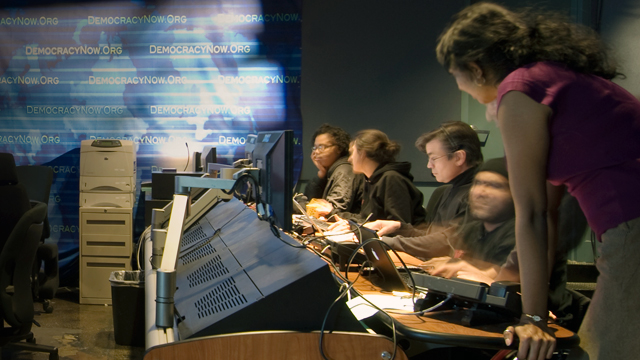
Media Options